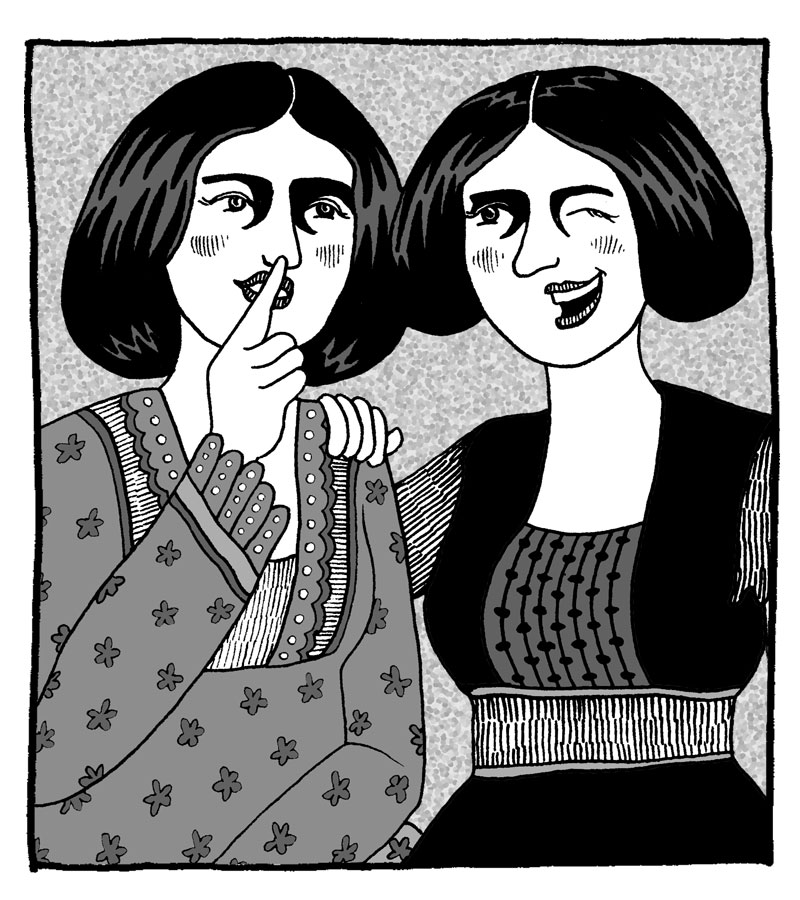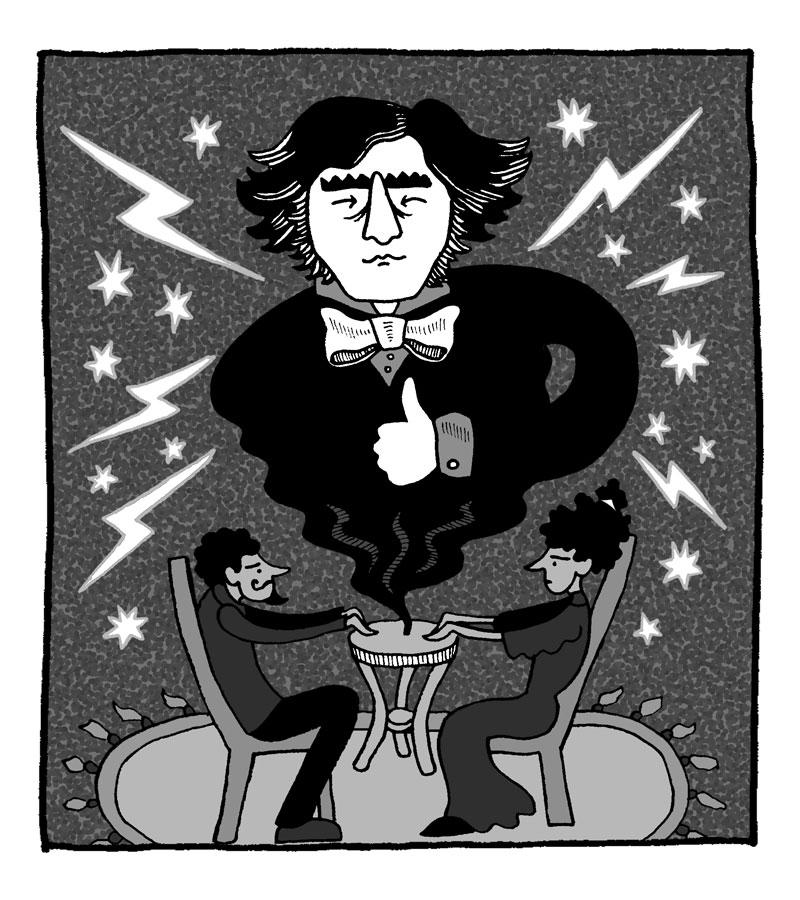Victorians were fascinated with spirits, magicians, telepathy, and all kinds of occult practices and supernatural phenomena. Here are five fascinating tidbits that didn’t make it in to Cicada’s November/December article “Victorian Ghost Hunters”:
- Arthur Conan Doyle believed in ghosts. The mastermind behind Sherlock Holmes was a die-hard séance-goer who wrote volumes on the topic of communing with the dead.
- Harry Houdini did not. Late in his career (and so technically just after the Victorian period), Houdini dedicated himself to debunking mediums. He swore any illusionist worth their salt could reproduce the effects seen at a séance, from strange rappings to levitations.
- The poet Robert Browning was so irate about fake mediums, he wrote “Mr. Sludge, ‘The Medium.’” Lines of satirical invective: the poet’s ultimate weapon.
- You could get your photo taken with a ghost. Spirit photographers like William Mumler would photograph you with the ghost of a departed loved one—for a price.
- Victorian England’s top society for paranormal research is still around. Founded in 1882, the Society for Psychical Research applies scientific methods to the investigation of the paranormal.
If you want to learn more about the art and science of Victorian ghost hunting, check out our article in the November/December issue! Here’s a taste:
From Victorian Ghost Hunters
by Anna Neher
Victorian England was a world of deepening strangeness. Magicians dazzled crowds with feats of illusion, mesmerists with hypnotic trances, mediums with ghostly communiqués from the spirit world. All the while, scientific advances were moving faster than the public could keep up. Photographs captured the seen, X-rays made the unseen visible, and the telegraph moved thoughts instantly across vast distances. It was awe-inspiring—and eerie. Is it any wonder that some Victorians would experience scientific advances as strange, magical, even ghostly? Or that amateur scientists and luminaries alike would turn their attention to the wonders on display at a sitting room séance?

Kate and Maggie Fox
In 1848, New York teens Kate and Maggie Fox made a sensation when they contacted the ghost of a murdered peddler—or so it seemed. In view of rapt throngs of neighbors, the sisters asked their “spirit” questions, and it answered via coded knocks (one for no, two for yes; or more laboriously, one for A, two for B, three for C . . .).
The sisters took the show on the road, packing lecture halls with demonstrations of “spirit rapping.” After decades of performances, Maggie fessed up: it had all been a hoax. But by then, it was too late. Raps and taps were echoing in séances on both sides of the Atlantic.

Michael Faraday
Table-turning was nineteenth-century Britain’s hottest fad. Anyone with an itch to explore psychic phenomena could gather a few friends, sit round a table, and hold hands. Sometimes minutes passed, sometimes hours—but eventually, the table began to rotate.
Was it an electric current? Animal magnetism? Inquisitive spirits? None of the above, said Michael Faraday, Britain’s top electrochemist. The sitters were unconsciously fulfilling their own expectations: they turned the table. Faraday remained a skeptic till death. What happened after was another matter. In 1887, his spirit contacted a medium to retract his disbelief.
Love this séance stuff? Make your very own Victorian Ghost Hunter’s Zine and be sure to subscribe to Cicada. And check out this cool book: Unexplained! Strange Sightings, Incredible Occurences in the Cricket Media store.



